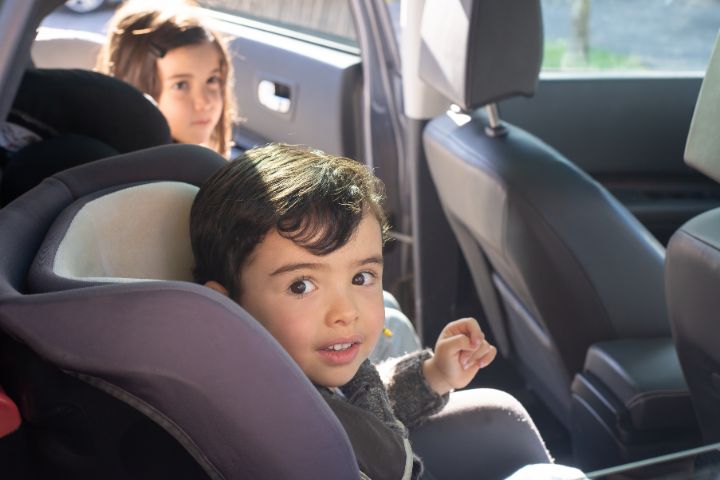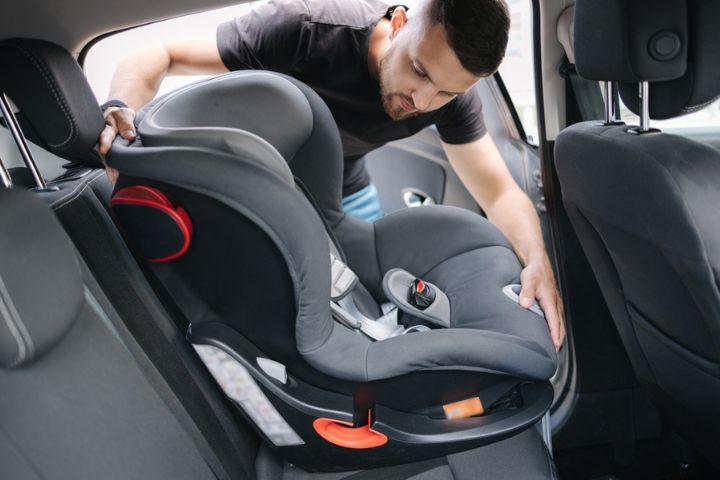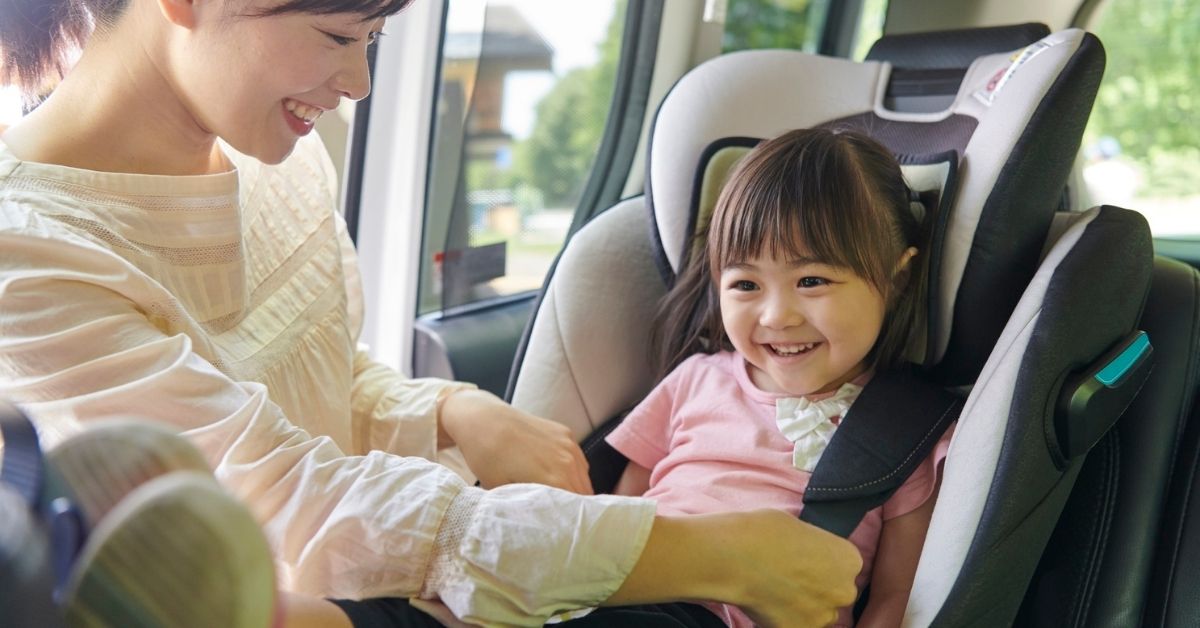As parents, we’re wired to protect our kids from harm. We check food labels, install baby gates, and triple-check that hot water isn’t too hot.
But when it comes to car travel, a single oversight can have life-altering consequences. That’s why understanding child safety in vehicles isn’t optional – it’s essential.
Let’s get into the nitty-gritty of keeping your little ones safe every time you hit the road.
Why Child Car Safety Matters
Car accidents remain one of the leading causes of injury and death in Australian children.
Even a short trip can turn dangerous if a child is not correctly restrained. The right information can mean the difference between a scare and a tragedy.

The Risks of Improper Restraint
Using the wrong seat – or using it the wrong way – greatly increases the risk of serious injury.
Unrestrained children are around seven times more likely to die in a crash. That’s a frightening stat, but it highlights how vital correct use really is.
Understanding the Impact of Road Accidents on Children
Kids aren’t just small adults. Their bones are softer, and their bodies more fragile. In a crash, forces that might bruise an adult could break a child’s ribs or spine.
That’s why their safety gear needs to match their developmental stage, not just their age.
Legal Requirements for Child Car Restraints in Australia
Australia has clear laws when it comes to how children should be restrained in cars. These aren’t just suggestions – they’re legal requirements backed by research and road safety data.
National Laws and Age-Based Guidelines
Here’s what’s required across the country:
- Children under 6 months must use a rear-facing restraint.
- 6 months to 4 years: rear-facing or forward-facing restraint with an inbuilt harness.
- 4 to 7 years: forward-facing restraint or booster seat.
- 7 years and over: booster seat or adult seatbelt (if the child passes the 5-step test – see below).
State-Specific Rules and Penalties
While the national rules are consistent, penalties vary. For example, in NSW, incorrect restraint use can attract a $352 fine and three demerit points.
Some states also require booster seats up to age 8, depending on the child’s size. Always check your local road authority’s website.
Types of Child Restraints and Their Appropriate Use
There’s no one-size-fits-all seat. As kids grow, their safety needs change. Picking the right seat at the right time makes all the difference.

Rear-Facing Seats
Rear-facing restraints are the safest option for young children. They support the head, neck, and spine in a crash, especially important before the neck muscles are fully developed.
Many seats allow rear-facing up to 30 months or more. Stick with it as long as your child fits the size limits.
Forward-Facing Seats
When your child outgrows their rear-facing seat, it’s time for a forward-facing restraint with a built-in harness.
These seats spread crash forces across the chest and shoulders. Most are suitable up to about 8 years of age, depending on the child’s size.
Booster Seats
Booster seats lift your child so the adult seatbelt fits properly over their shoulder and hips.
Without a booster, seatbelts can rest across the neck or stomach – a dangerous combo in a collision. Use a booster until the adult seatbelt fits perfectly on its own.
Adult Seatbelts and the 5-Step Test
Before switching to an adult seatbelt, your child should pass these five checks:
- Back against the seat.
- Knees bent comfortably over the edge.
- Lap belt low on hips and touching thighs.
- The shoulder belt crosses the shoulder, not the neck or face.
- Can sit like this for the whole trip.
How to Choose the Right Restraint for Your Child
Choosing a car seat isn’t just about age – it’s also about size, weight, and safety ratings. Don’t rely on guesswork. Let’s talk strategy.

Factors to Consider: Age, Height, and Weight
Always check the manufacturer’s size limits. Some toddlers are tall for their age and may outgrow a seat by height before weight.
Flip the script if your child is heavier but shorter. Use the size chart on the seat to guide you.
Using Australian Standards and Certification Labels
Only use seats certified to AS/NZS 1754. This label means the seat meets strict safety and testing standards. Imported seats without this certification may be illegal to use in Australia.
When to Transition Between Restraints
Don’t rush the upgrade. Keep your child in each stage for as long as they fit. Bigger isn’t always better when it comes to safety seats.
Correct Installation and Usage of Child Restraints
You can buy the best seat on the market, but if it’s not fitted correctly, it won’t do its job. Unfortunately, research shows that over half of child restraints in Australia are used incorrectly.
Anchoring and Positioning Tips
Use the top tether strap, and attach it to the correct anchor point – not the luggage hook. Install the seat tightly.
There should be minimal movement (less than 2.5 cm side-to-side). Rear-facing seats should sit at the correct angle, usually between 30–45 degrees.

How to Avoid Common Installation Mistakes
Watch out for twisted harness straps, loose seatbelts, and placing the seat in the wrong position. Always read both your vehicle’s manual and the restraint’s instructions. And yes – that includes the fine print.
Where to Get Professional Help with Fitting
Child restraint fitting stations can help. Accredited fitters know the ins and outs of different car models and seats. You can find a local service through Kidsafe or your state transport website.
Best Practices for Everyday Car Travel with Children
Car safety doesn’t end once the seat is installed. There are habits every parent should stick to – even if it means repeating yourself like a parrot every single drive.
Safest Seating Positions
The centre rear seat is statistically the safest spot. If your car allows it, install your child’s seat there.
If not, either side of the back seat is acceptable – just never the front seat for children under 7 unless all other seats are taken by other children under 7.
Managing Comfort and Behaviour During Trips
Kids get grumpy. Long drives mean whining, kicking, and the odd shoe being thrown.
Keep snacks handy (non-choking hazards), play music they like, and use mirrors for babies so they can see your face. A calm child is a safer one.
Securing Loose Objects in the Vehicle
In a crash, even a water bottle can become a projectile. Store loose items in the boot or under the seat. Keep the car clean – not just for appearances, but for safety.
What Not to Do: Common Mistakes Parents Make
Even well-meaning parents can make serious errors. Let’s call them out so you can avoid them.

Incorrect Use of Restraints
Using the wrong seat or letting a child slip their arms out of the harness negates the seat’s purpose. Adjust the straps so they sit snugly – if you can pinch the strap, it’s too loose.
Premature Transitions to Booster or Seatbelt
It’s tempting to move your child to a “big kid seat” early, but don’t. They need to meet all size guidelines first. The longer they stay in the safer option, the better protected they’ll be.
Leaving Children Unattended in Vehicles
Never, ever leave a child alone in a car – not even for a minute. Heatstroke can happen fast, even on a mild day. Aside from safety, it’s also illegal in many states.
When It’s Time to Consider a Safer Vehicle
Sometimes, it’s not the seat that’s the problem – it’s the car. If your vehicle is older or lacks modern safety features, it may be time to upgrade.

Vehicle Features That Improve Child Safety
Look for cars with ISOFIX anchor points, curtain airbags, and good ANCAP safety ratings. Rear-seat air vents and wide door openings also make everyday life easier.
Signs Your Current Car May Be Unsafe
If your car lacks anchor points, has seatbelts that don’t retract properly, or is prone to breakdowns, it may not be fit for transporting kids. Safety shouldn’t be optional – it’s the foundation of every ride.
How to Responsibly Dispose of Old Vehicles
If your car is no longer roadworthy or safe for your family, services like Newcastle Top Cash Car Removal can help you responsibly get rid of it.
They’ll even pay cash and recycle the parts – so it’s good for your wallet and the planet.
Helpful Resources and Where to Get More Information
There’s plenty of guidance out there – and it’s free. Whether you’re a first-time parent or just need a refresher, the following resources are gold.
Government and Health Authority Recommendations
- childcarseats.com.au – Product ratings and legal advice
- raisingchildren.net.au – Practical parenting advice
- kidsafe.com.au – Child injury prevention tips
Where to Find Accredited Fitting Stations
Many states offer search tools to find a certified fitter near you. Start with Kidsafe or your local transport authority. Some baby stores also offer fitting services for a small fee.

Educational Tools for Parents and Carers
From video tutorials to live demonstrations, education makes a big difference. Schools and community centres often host info sessions – check local noticeboards or online events pages.
Final Thoughts on Keeping Your Children Safe in the Car
Every car trip is a chance to protect – or endanger – your child. It might feel overwhelming at first, but it boils down to this: right seat, right fit, right use.
Stay informed, stay alert, and trust your instincts. Because when your kids are in the car, safety isn’t optional – it’s the rule of the road.
Staying Up to Date with Safety Standards
Regulations and product recalls change. Make it a habit to check for updates once a year, especially before transitioning to a new seat.
Making Child Safety a Daily Priority
Strap in, right. No shortcuts. No excuses. Because nothing matters more than getting your little legends home safely – every single time.

